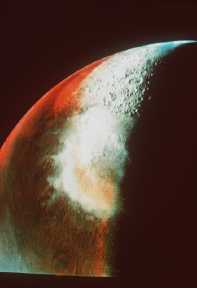This is an image of Mars.
Click on image for full size
Image from: NASA
The Earliest History of Mars
The terrestrial planets formed about 4 Billion Years ago. As the process which formed them came to an end, the planets may have been left in either of the following two states:
- very warm, with a softer & pliable interior. The planet separates into layers, and the heavy iron falls to the center of the planet to form a core. There is probably abundant water on the surface. There is probably volcanic activity as well as plate tectonics driven by the heat from inside.
- cold and rocky, needing to be warmed from the inside before activity is seen on the surface. The planet never separates into layers, the heavy iron stays near the surface, and the planet never forms a core.
With Mars, the second case is probably more likely because we can see a lot of iron on the surface (it's red), and the core is very small.
Nevertheless, during this time, the surface continued to be bombarded by the remanent of planetary material available nearby which caused a great deal of heating near the surface of Mars. This heating was accompanied by hydrothermal activity, or circulation of water within the ground. These conditions are very favorable for certain forms of life. Continental drift may also have been possible at this early time.
You might also be interested in:
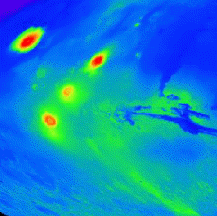
On this map of Mars, the lightly cratered Tharsis Ridge is shown, as well as the heavily cratered Martian highlands (near the bottom of the picture), and Valles Marineris to the right. The volcanoes are
...more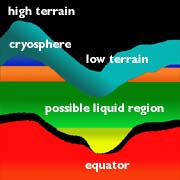
The unusual global geography of Mars helps to explain the fact that water has been drawn from the southern hemisphere to the northern hemisphere of the planet through all of Martian history (that is, from
...more
The Martian geography is one of high altitudes at high southern latitudes and low altitudes at low latitudes. The ground is less frozen at low latitudes because it is warmer and water can evaporate. Thus,
...more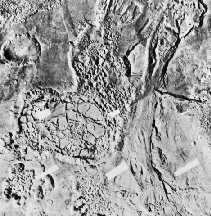
Separate from the Martian outflow channels, or the river valley networks, are large Martian lakes (600 km, or ~1000 miles across) which exhibit evidence of a periodic and catastrophic release of water
...more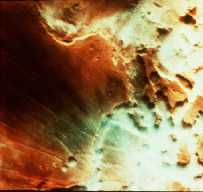
This is an image of fog in a Martian canyon. The presence of fog provides evidence of water, and a water cycle on Mars. More fog has been seen in images returned by Mars Global Surveyor of the south polar
...more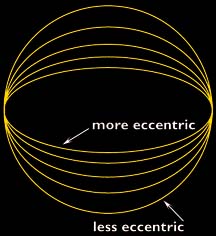
The Martian climate is more influenced by the shape of the Martian orbit than the climate of the Earth is influenced by the shape of the Earth's orbit. The orbit of Mars is more elliptical than that of
...more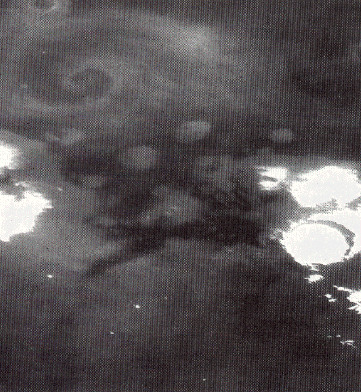
This is an image of a storm moving across the Martian terrain. The camera is looking down upon the storm and the storm front forms a spiral pattern, the same way terrestrial storms are presented on the
...more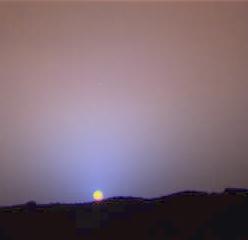
This is image of a Martian sunset illustrates just how thin the Martian atmosphere is. The terrestrial "blue sky" comes about because molecules of the atmosphere scatter sunlight. In this image, the Martian
...more


